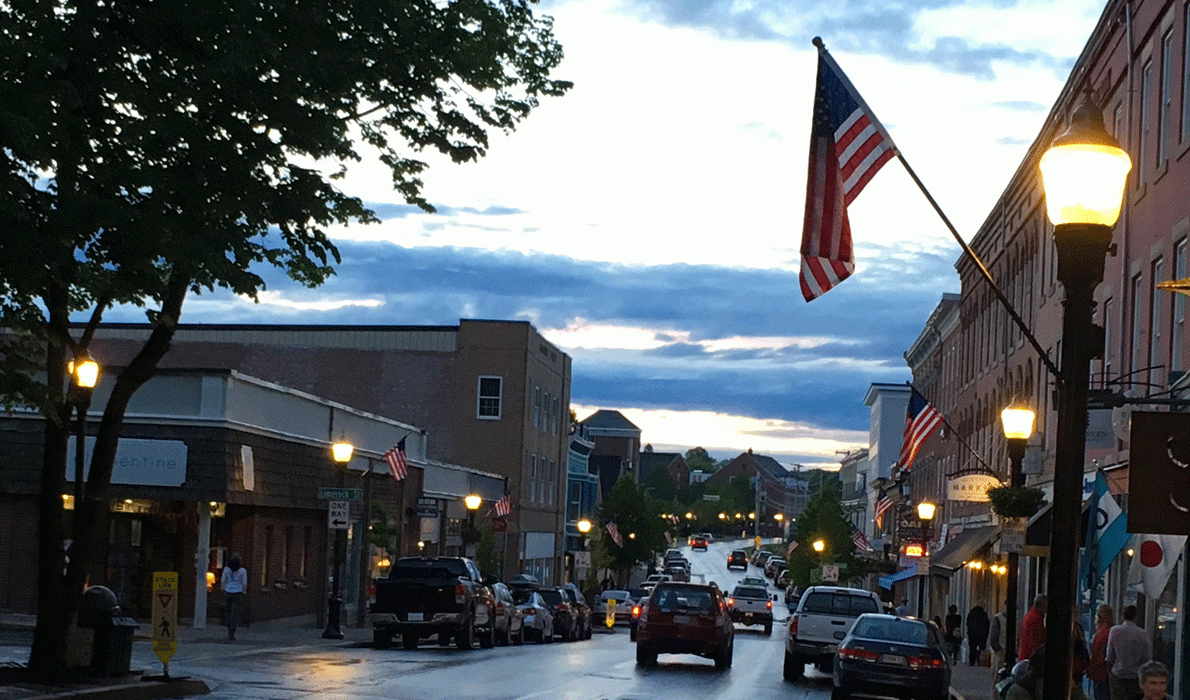Posted June 27, 2018
Last modified December 13, 2018
When I first began working in downtown Belfast in the late 1980s, I noticed an odd trend. On Fridays, it was a lot harder to find a parking space than it was on Mondays.
As I paid more attention to this phenomenon, I began noticing that people who I knew lived in the more rural towns in Waldo County—Montville, Monroe, Searsmont—seemed to be in Belfast on Friday mornings. These were people who did not work in town; they just seemed to be busy, going to the co-op, the bank, the hardware store.
I asked someone who had lived in town longer than I had about this, and was told that the pattern had little to do with paychecks being issued on Friday, and more to do with tradition. Fridays, he said, were market days, going back to the 19th century. Farmers from those rural towns would haul their produce into Belfast in wagons, perhaps to be sold in the several grocery stores or maybe shipped out via the railroad.
Maybe those folks in the 1980s were unconsciously following much older patterns, or maybe not. But whether it was Fridays or not, residents of those small towns had a commercial, social, and cultural relationship with Belfast, the county seat.
Today, we call these towns—Belfast, Ellsworth, Machias, Rockland, Bath, Brunswick, Damariscotta, and others—service center towns. That designation isn’t tied to being the seat of county government. It has more to do with their hosting a Walmart, Hannaford, or Shaw’s.
There’s a lot to like in living in these towns. They have libraries. Many have movie theaters. Coffee shops and pubs are handy. And pizza can be enjoyed as late as 9 p.m., and in some towns, even delivered to your home.
But this comes at a price.
With the stores and bars, comes the need for a sizable police force. Listen to a police scanner, and you’ll hear complaints of shoplifters and fights, and even the most stellar of folks who come to town can get into a fender bender. Emergency responders must be trained and ready for the tourist who has a heart attack walking up the hill from the harbor.
And many business owners and employees spend five days a week in service centers but live outside the town. That means the sewer and water systems in Belfast must be larger than they would be for the city’s 6,300 residents.
So it’s no surprise that property taxes are often higher in service centers. Rockland’s mill rate is about $22 per thousand in valuation. Union, several miles inland, is about $15.80. And you could make the case that similar houses are valued higher in service centers than they are in the hinterlands, further driving up property taxes.
A couple of other examples: Ellsworth’s mill rate is about $17.50; Sorrento’s, also in Hancock County, is $8. Belfast’s rate is $19.30, while bordering Northport’s is $12.40.
So can anything be done? Yes.
Maine’s current sales tax rate is 5.5 percent. If service center towns could add 1 percent to sales made within their borders—and direct that revenue to municipal coffers—these communities would more attractive places for residents. Lower property taxes can ease the burden for seniors who have lived in these towns for decades, as well as make it easier for first-time homeowners.
The idea has been proposed before, and the state legislature has shot it down, for reasons that have some logic—it creates inconsistency for tourists and others, and it creates the need for more accounting.
But some of our coastal commercial hubs are stretched thin. Paying for more police officers, emergency responders, more road repairs, better sewer and water utilities—especially if some of that revenue comes from out-of-state tourists—is an investment that can help us all, those who live in service centers and those who rely on them.
Tom Groening is editor of The Working Waterfront.

Contributed by




